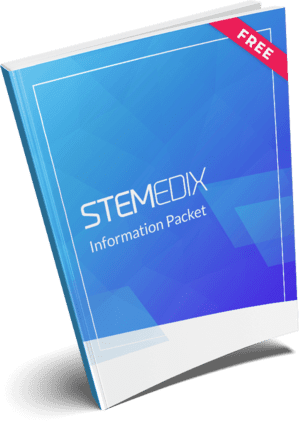
by admin | Jul 29, 2022 | Mesenchymal Stem Cells, Stem Cell Research, Stem Cell Therapy
Stem cells, and specifically mesenchymal stem cells (MSCs), have long been considered as a promising therapeutic agent for the treatment of a wide variety of degenerative and ischemic diseases. Over this time, MSC immunomodulation, their capacity for multilineage differentiation, and their ability to self-renew have been well established and are now considered to be clinically relevant.
Considering this, scientists have hypothesized that the therapeutic application of MSCs in immune/inflammatory contexts may be more efficacious than other, more traditional approaches currently used in the field of regenerative medicine.
In this review, Wang et al. specifically focus on the non-traditional use of MSCs as a potential treatment towards immune/inflammatory-mediated diseases and identify important findings and trends in this area of study as they relate to specific immune/inflammation-mediated diseases, including graft-versus-host disease (GVHD), multiple sclerosis (MS), joint diseases [including Osteoarthritis (OA) and rheumatoid arthritis (RA)], inflammatory bowel disease (IBD), and inflammatory airway and pulmonary diseases.
While there have been several promising results indicated in a number of trials using MSC for treatment of GVHD, the same results have not consistently been observed in all trials. One potential reason for the observed difference in results could potentially be a result of heterogeneity observed in conducted trials. Significant observed differences included those between pediatric and adult patients, the type of stem cell transplanted, as well as the MSCs utilized. Interestingly, there has also been a significant difference between results of published trials occurring in Europe (generally positive) compared to those trials occurring in North America (more equivocal results). While MSCs have strong potential for use as a therapeutic agent for GVHD, additional study into patient population and stringent MSC processing criteria are required before consistent and reproducible results are able to be delivered.
As of the publication of this review (2016), Wang et al. identified 23 registered clinical trials using MSCs for the treatment of MS. Additionally, animal models exploring the use of MSCs for the treatment of MS have demonstrated strong therapeutic effects. While many of the clinical trials using MSCs for the treatment of MS were ongoing, several animal models and many additional preclinical studies demonstrated MSCs to have therapeutic efficacy for the treatment of patients with MS.
Since cartilage cannot regenerate, the use of MSCs in treatment of joint diseases are considered a strong therapeutic option for several of these conditions, including OA and RA. Considering that prevention of inflammation and immune attacks on joints must occur in order for the joint repair to occur, and considering the immunosuppressive properties associated with MSCs, MSCs are thought to be well suited for use in the treatment of OA – a thought that has been well supported in both small and large animal studies.
Additionally, several of the 38 clinical trials underway at publication of this review indicated positive results in reduction of OA-induced pain and other related symptoms and for joint repair as observed by cartilage regeneration. On the other hand, similar results have not been observed for RA. The authors point to the detailed mechanistic differences between RA and OA as the likely reason for the observed therapeutic differences observed between the two joint diseases.
The 19 clinical trials and several animal model studies have overwhelmingly demonstrated that MSC therapy is both safe and a highly viable therapeutic option for the treatment of IBD, especially CD fistula formations.
Considering that between 80-90% of MSCs delivered intravenously have been observed to rapidly reach the lungs, MSC therapy has been thought to be particularly well suited for treatment in several pulmonary diseases, including COPD, asthma,emphysema, and even pneumonia. However, while animal models and preclinical studies have demonstrated MSCs to be safe in this application, the 29 registered clinical studies using MSCs for pulmonary disorders have also indicated the application to be safe – but have yet to replicate the efficacy observed and reported in the previously mentioned preclinical animal studies.
The authors of the review conclude that hundreds of clinical trials evaluating the effectiveness of MSC therapy in this application have demonstrated their use to be safe. However, the overwhelmingly positive results reported in preclinical animal studies have not yet been observed through these clinical trials. Considering these findings, Wang et al. call for a better understanding on both the mechanistic properties of MSC Immunomodulation and the pathophysiological details and subsets with specific disease entities as a way to better tailor MSC therapy.
Source: “Human mesenchymal stem cells (MSCs) for treatment towards ….” 4 Nov. 2016, https://www.ncbi.nlm.nih.gov/pmc/articles/PMC5095977/.

by admin | Jul 22, 2022 | Rheumatoid Arthritis, Mesenchymal Stem Cells, Stem Cell Research, Stem Cell Therapy
Rheumatoid arthritis (RA) is a chronic autoimmune inflammatory disorder that causes your immune system to mistakenly attack its own tissue and specifically affects the lining of the joints, resulting in painful swelling, bone erosion, and eventually permanent joint deformity.
With an estimated 1.5 million people in the U.S. living with RA, the disease affects nearly three times as many women as men. In addition to affecting the synovial joints and causing articular destruction and functional disability, an estimated 40% of those diagnosed with RA experience additional signs and symptoms that do not involve the joints; these affected areas often include most body systems and specifically the skin, eyes, lungs, nerves, heart, and blood vessels.
Multiple studies have demonstrated that bone marrow mesenchymal stem cells could be effective for treating a number of autoimmune diseases, including RA. However, little is known about the effectiveness of umbilical cord (UC)-MSCs as they relate to the treatment of autoimmune diseases, specifically RA.
Considering this, it comes as little surprise to learn that bone marrow MSCs (BM-MSCs) have been the most common source of MSCs used in the study of immunosuppression of autoimmune conditions. However, the collection of BM-MSCs requires aspiration, which is an invasive procedure. Additionally, the number of BM-MSCs and the differentiating potential of BM-MSCs both decrease significantly with age.
UC-MSCs, on the other hand, are collected using non-invasive procedures after birth and before the umbilical cord is discarded. Additionally, UC-MSCs have been well documented to possess properties of self-renewal and multipotent differentiation, making them a potential candidate for alternative sources of stem cells.
In this study, Liu et al. examined the suppressive effects of UC-MCSs on the proliferation, invasive behavior, and inflammatory responses of fibroblast-like synoviocytes (FLSs) from patients with RA.
At the conclusion of this study, the authors offered a number of key findings about the effectiveness of UC-MSCs in this application, including:
- US-MSCs inhibited proliferation of FLSs from RA patients
- US-MSCs suppressed the invasive behavior and MMP expression of FLSs from RA patients
- US-MSCs suppressed the inflammatory response of FLSs from RA patients
- UC-MSCs induced hyporesponsiveness of T lymphocytes from RA patients
- UC-MSCs induced Tregs from RA patients
- UC-MSCs prevented tissue damage and reduced inflammatory responses in CIA
The authors conclude by indicating the evidence provided by this study indicates that UC-MSCS can exert a profound inhibitory effect on FLSs and T cells from RA patients and that they might be a therapeutic perspective in RA. Source: “Therapeutic potential of human umbilical cord mesenchymal stem ….” https://pubmed.ncbi.nlm.nih.gov/21080925/.

by admin | Jul 15, 2022 | Osteoarthritis, Extracellular Vesicles, Mesenchymal Stem Cells, Stem Cell Research, Stem Cell Therapy
Osteoarthritis (OA) is the most common form of arthritis, affecting over 525 million people around the world. Characterized by pain, swelling, and stiffness resulting from the degradation of cartilage that provides cushion and protection between our bones, OA is an inflammatory condition without a clear and effective treatment.
OA most commonly affects the hands, knees, hips, and spine, but ultimately can cause damage to any joint in the body. Currently, most treatments for OA are designed to minimize the symptoms of the condition, not to treat or prevent the condition itself.
In recent years, pre-clinical studies of mesenchymal stem cells (MSCs) have demonstrated to be successful in resurfacing areas of degenerated cartilage and early-phase clinical trials found that intra-articular (IA) administration of MSCs leads to a reduction in pain and improved cartilage protection and healing.
In this review, Mancuso et al. provide an overview of the functions and mechanisms of MSC-secreted molecules found in in-vitro and in-vivo models of OA. Although MSCs disappear from the target area soon after administration, they have been found to demonstrate a rich secretory profile that is enhanced by exposure to inflammatory signals and is still able to deliver immunomodulatory effects.
Mancuso et al. highlight that, although chondrocyte apoptosis has long been associated with OA and despite the fact that there is no conclusive report identifying anti-apoptosis effects associated with MSCs, indirect evidence suggests that they have inhibited of ex-vitro cultured OA chondrocytes. Considering this, the authors recommend future studies of joint-associated MSC anti-apoptotic effects as a way to identify direct mediators of the process.
According to the authors of this review, the role of inflammation in the establishment and maintenance of OA is now widely accepted with synovial membrane inflammation a hallmark of OA pathology. Additionally, the biological markers of inflammation positively correlate with knee pain and clinical progression of OA. Studies have demonstrated that licensed MSCs secrete an array of anti-inflammatory cytokines which can help re-establish an equilibrium in the inflamed synovium and reduce inflammation in joints affected by OA.
After being administered, MSCs tend to undergo biological changes more radical than differentiation or licensing, with most completely disappearing 10 days post-injection. However, even after this occurs, there have been significant therapeutic effects observed.
Researchers have found that these apoptotic MSCs communicate with immune cells both directly and indirectly with patient responsiveness to MSCs correlating with their cytotoxic capacity. Mancuso et al. conclude that these findings provide evidence that apoptosis is one of the driving mechanisms of MSC-mediated immunosuppression.
Findings also suggest that the paracrine action of MSCs is not limited to soluble factors and has been shown to produce extracellular vesicles (ECVs). In pre-clinical models, ECVs have been observed to have anti-apoptotic, anti-fibrotic, pro-angiogenic, and anti-inflammatory effects. In addition, these ECVs – when derived from MSCs – inhibit the proliferation of lymphocytes, macrophages, and B cells.
MSC-derived ECVs have shown to be promising in rat models of osteoporosis and have recently been tested in OA animal models with promising results. The authors point out that while further study is required, the initial findings indicate that the use of MSC-ECVs in therapy designed for OA would bring many advantages when compared to cell-derived products. The authors also point out that several issues with ECVs still have to be considered, including the need for them to be specifically tailored for the specific indication being treated.
Mancuso et al. conclude that MSCS has already proved to be a valuable tool for many conditions and there is significant potential for their use in OA. Phase I clinical trials have established that the direct IA administration of MSCs in OA patients is safe and pain reduction and increased cartilage thickness have been observed after injection. However, they also call for additional studies to examine the role of cell death in mediating the therapeutic effects of MSCs.
Source: Mesenchymal Stem Cell Therapy for Osteoarthritis: The Critical Role ….” 11 Jan. 2019, https://www.frontiersin.org/articles/10.3389/fbioe.2019.00009/full.

by admin | Jul 8, 2022 | Mesenchymal Stem Cells, Stem Cell Research
Human Mesenchymal Stem Cells (hMSCs) are the non-hematopoietic, multipotent stem cells with the capacity to differentiate into mesodermal lineages such as osteocytes, adipocytes, and chondrocytes as well ectodermal (neurocytes) and endodermal lineages (hepatocytes).
Until recently, when the immunomodulation properties of MSCs were proven to be clinically relevant, the use of these stem cells was met with skepticism and doubt by a large portion of the scientific community.
However, since that time, MSCs have demonstrated tremendous potential for allogeneic use in a number of applications, including cell replacement, and tissue regeneration, and for use in the therapeutic treatment of immune- and inflammation-mediated diseases. In fact, in many cases, the use of MSCs has been so successful that they appear to demonstrate more efficacy than what has been observed previously in traditional regenerative medicine.
Among the many benefits making MSCs so interesting for this application is their capacity for both multilineage differentiation and immunomodulation. Obtaining a better understanding of these capacities has opened new doors in regenerative medicine and demonstrated that these somatic progenitor cells are highly versatile for a wide range of therapeutic applications.
Additionally, the authors of this review point to research indicating the capacity of MSCs to home to the site of injury and/or inflammation, making them more attractive for use in clinical application. In this review, Wang et al. focus on this non-traditional clinical use of tissue-specific stem cells and highlight important findings and trends in this exciting area of stem cell therapy.
At the time this review was published, there were over 500 MSCs-related studies registered with the NIH Clinical Trial Database. Interestingly, nearly half of these trials involve attempts to better understand the use of MSCs in treating immune- and inflammation-mediated diseases – an indication of the recent shift in focus when determining effective therapeutic applications of MSCs.
In reviewing these clinical trials, Wang et al. found that the most common immune-/inflammation-mediated indications in MSC clinical trials were for graft-versus-host disease (GVHD), osteoarthritis (OA), obstructive airway disease, multiple sclerosis (MS), and solid organ transplant rejection.
Clinical trials involving MSCs, and specifically HSCs, in GVHD have indicated that while there may be indications of immunosuppressant therapy, immune rejection in the form of GVHD is still a major cause of morbidity and mortality, occurring in 30 ~ 40 % of allogeneic HSC transplantations.
Despite a number of clinical trials indicating significant efficacy in the use of MSCs for GVHD treatment, the authors point out that these findings were not observed consistently throughout all trials. Significant differences in these studies appeared to be related to differences in adult and pediatric applications, a specific type of HSC that was transplanted, and the type of MSCs that were utilized. There also appears to be a disparity in the results obtained from similar studies conducted in Europe and North America. Considering this, there are a number of studies involving MSCs and GVHD still ongoing.
These findings led the authors to conclude that despite the strong potential of MSCs as therapeutic agents for GVHD, detailed tailoring of the patient population and stringent MSC processing criteria are necessary to deliver consistent and reproducible results.
Despite the mixed findings for use of MSCs in the treatment of GVHD, trials reviewed for other immune/inflammation-mediated diseases, including MS, inflammatory bowel disease, OA, RA, and inflammatory airway and pulmonary diseases demonstrated positive results pertaining to the safety of MSC therapy when used in this application.
Specifically, Wang et al. point out that although there have been positive results observed in preclinical animal studies, these results have not translated to clinical efficacy. In considering this, the authors suggest a focus on better clarifying pathophysiological details and subsets within disease entities to better tailor MSC therapy and standardization of in vitro culture protocols with stringent criteria for testing of functional parameters as two important steps to improve our understanding on the mechanistic properties of MSC immunomodulation.
Despite these recommendations, the authors conclude that the current results and developments of these clinical trials demonstrate that the tremendous potential of MSC therapy in a wide range of areas, including the treatment of immune/inflammation-mediated diseases, can be expected in the near future to achieve clinical relevance.
Source: “Human mesenchymal stem cells (MSCs) for treatment towards ….” 4 Nov. 2016, https://www.ncbi.nlm.nih.gov/pmc/articles/PMC5095977/.

by admin | Jun 24, 2022 | Mesenchymal Stem Cells, Exosomes, Stem Cell Research, Stem Cell Therapy
Mesenchymal stem cells (MSCs) have been widely studied and increasingly recognized as a potential therapeutic with the ability to initiate and support tissue regeneration and remodeling. While over 1100 clinical trials have been conducted to assess the therapeutic benefits of MSCs, there continues to be widespread variation surrounding the potential treatment outcomes associated with these cells.
This review, authored by Chang, Yan, Yao, Zhang, Li, and Mao, focuses primarily on profiling the effects of the secretome, or the effects of paracrine signals of MSC, as well as highlights the various engineering approaches used to improve these MSC secretomes. Chang et al. also review recent advances in biomaterials-based therapeutic strategies for the delivery of MSCs and MSC-derived secretomes.
Recent research has demonstrated paracrine signaling as the primary mechanism of MSC therapeutic efficacy. This shift towards the MSC secretome in applications ranging from cartilage regeneration to cardiovascular and other microenvironments has demonstrated its therapeutic potential in prevalent injury models. Additionally, the versatility of MSCs allows them to be specifically tailored using biomaterials toward specific therapeutic outcomes.
A specific example of MSC secretome’s therapeutic potential is their ability to support cardiovascular tissue repair through minimization of fibrotic scarring of cardiac tissue typically observed to occur during a myocardial infarction (MI). Additionally, research has demonstrated MSC secretomes facilitate the proliferative, angiogenic, and anti-inflammatory phases of the wound healing process.
Secretome transfer occurring between MSCs and other cells in the target area primarily occurs through the release of extracellular vesicles (EVs) and is considered a safer form of therapeutic application compared to MSC therapy. MSC secretomes can also be specifically engineered through hypoxia, treatment with bioactive agents, and modulating cell-cell and ECM interactions in the MSC culture.
One of the biggest challenges facing the therapeutic efficacy of MSC is their limited cell survival, retention, and engraftment following injection or transplantation (found to be as low as 1% surviving one day after implantation). Recent studies have demonstrated MSC secretome, and specifically, EVs, although they remain a significant obstacle, are a promising alternative and able to bypass a number of cellular challenges, including cell survival.
Further consideration and approaches to increasing survival rates of MSCs include experimenting with a wide variety of biomaterials as a way to promote adaptation in the target implantation area. This includes looking for biomaterials to regulate oxygen tension levels, glucose supply, mechanical stress, and pH levels, which collectively can be used to regulate metabolic pathways of the MSC, effectively influencing cell survival and their ability to be used as therapeutic treatment options.
Despite the recent advances in the use of MSC secretomes and their delivery strategies, Chang et al. call for continued study of the subject and specifically recommend developing a specific set of paracrine cues to be used as a well-defined formulation in future therapeutic applications.
The authors also point out that the use of EVs and other direct applications of the MSC secretome are thought to be promising for the treatment of osteoarthritis, ischemic stroke, and coronavirus-related diseases. Considering this, Chang et al. highlight the increasing need to fully understand the paracrine signaling effects of MSC therapies and the delivery strategies associated with this application.
Source: “Effects of Mesenchymal Stem Cell‐Derived Paracrine Signals and ….” 12 Jan. 2021, https://onlinelibrary.wiley.com/doi/full/10.1002/adhm.202001689.

by admin | May 20, 2022 | Stem Cell Therapy, Mesenchymal Stem Cells
Every year, stem cell therapy gains massive traction due to its incredible regenerative and auto-repair properties. More specifically, patients who deal with chronic, incurable conditions such as multiple sclerosis (MS) are closely following any news about this cutting-edge technology.
What is a stem cell?
A stem cell is a special biological entity that has unlimited differentiation potentials and can become any type of cell, hence is also called an undifferentiated cell. The body keeps a large number of these cells in different sites (e.g. bone marrow, umbilical cord, adipose tissue) in case it endures lesions that need regenerative capacities.
The fascinating feature of stem cells is their ability to differentiate into different cell types, including hepatocytes, nerve fibers, osteocytes, chondrocytes, and keratinocytes.
Are stem cells extracted from fetuses?
Perhaps the unethical aspect of stem cell therapy is the most commonly believed misconception out there. This is because early research focused on extracting stem cells from fetuses and embryos, which is what stuck with media outlets and the general population.
However, as mentioned earlier, stem cells are kept in the body to repair inflicted damage, allowing medical professionals to extract these cells and use them to manage a variety of conditions and their symptoms.
How do stem cells help with MS?
Multiple sclerosis is a chronic condition that’s caused by a type IV hypersensitivity reaction, which occurs when the immune system releases antibodies and specific cells to target a certain tissue. In the case of MS, the immune system attacks the myelin sheaths on nerve fibers that allow for fast bioelectrical transmissions of signals.
Stem cell therapy can potentially help MS progression and symptoms in two major ways:
Immunomodulating
By getting rid of the hyperactive immune cells and replacing them with new regulated ones, using stem cell therapy, the reaction against nerve fibers is potentially halted and symptoms may start to temper down.
Re-myelinization
Instead of targeting the immune system, stem cell therapy also helps by having the ability to regenerate myelin sheath. Note that the process of re-myelinization does not occur spontaneously without having progenitor cells to rely on.
In other words, if the patient does not receive stem cell therapy, the myelin sheaths that were destroyed in the relapse phase are irreversibly lost.
How long does it take for possible symptom improvement?
Typically, patients experience symptom improvement after several months of receiving therapy, with peaking results between the 3rd and 6th-month post-procedure. Some may experience feeling improvements earlier. The types of symptoms expected to improve include all signs that were triggered by multiple sclerosis-related inflammatory and immune reactions.
Is stem cell therapy superior to conventional treatment?
The answer to this question is not straightforward, as many factors fall into play. To keep it short, conventional therapy focuses on suppressing your immune system, which predisposes you to several infectious pathogens. Moreover, it cannot modulate the immune system nor regenerate the damage inflicted on the nerve fibers.
Incorporating stem cell therapy in the treatment of MS has opened a door to new opportunities to manage a condition that was initially thought incurable. It is important to remember that this is a management tool that can be done in conjunction with traditional medicine as well as healthy lifestyle choices.
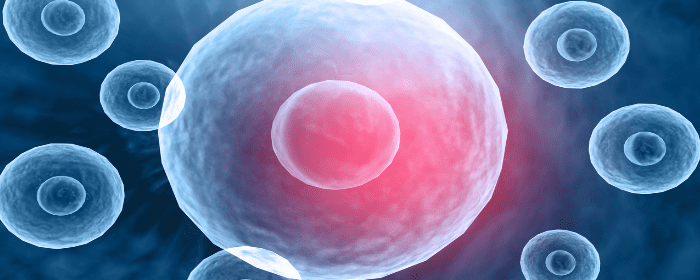


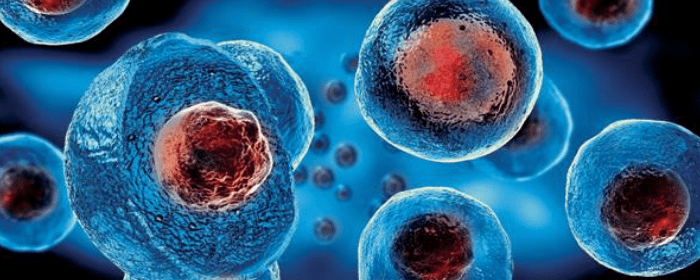
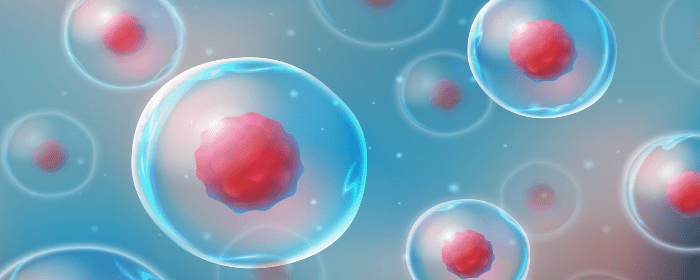
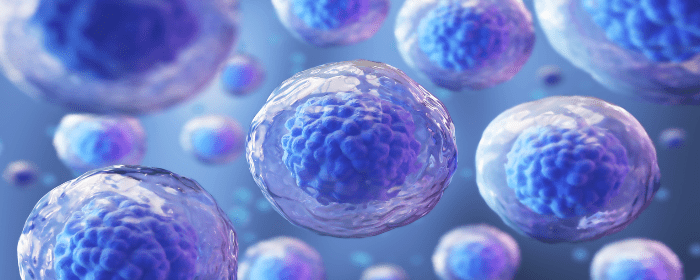
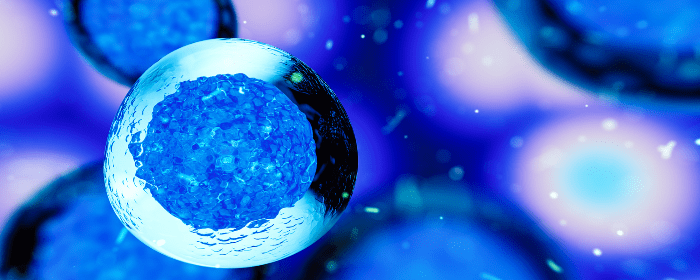
 St. Petersburg, Florida
St. Petersburg, Florida
